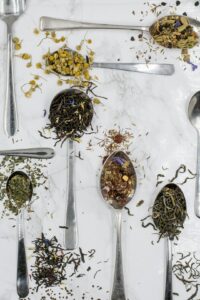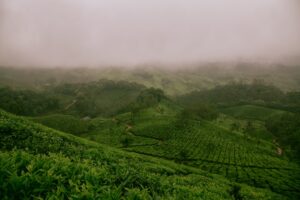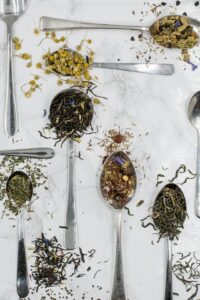Support our educational content for free when you purchase through links on our site. Learn more
Can You Grow Camellia Sinensis in the USA? [2024]
Have you ever wondered if it’s possible to grow your own tea plants in the United States? Well, you’re in luck! In this article, we will explore the feasibility of growing Camellia sinensis, the plant from which tea leaves and buds are harvested, in the USA. We’ll delve into the history of tea cultivation in the country, discuss the different regions where it can be grown, and provide you with some expert tips on how to successfully grow your own tea plants. So grab a cup of your favorite tea and let’s dive in!
Table of Contents
- Quick Answer
- Quick Tips and Facts
- Background
- History of Tea Cultivation in the USA
- Tea Farms in the USA
- Growing Camellia Sinensis in Different Regions
- Tips for Growing Your Own Camellia Sinensis
- FAQ
- Conclusion
- Recommended Links
- Reference Links
Quick Answer
Yes, you can grow Camellia sinensis in the USA! While tea cultivation has historically been a niche crop in the country, there are several regions where it can be successfully grown. The US mainland is home to both large-scale tea plantations and smaller commercial tea gardens. Additionally, many tea enthusiasts have successfully grown their own tea plants in their gardens. So whether you’re a tea lover or an aspiring tea grower, read on to discover more about growing Camellia sinensis in the USA.
CHECK PRICE on: Amazon | Walmart | Etsy
Quick Tips and Facts
- Camellia sinensis, the source of tea leaves and buds, can be grown in much of the United States.
- The US mainland has one relatively large plantation with full mechanization in Charleston, South Carolina, and many small commercial tea gardens that pick tea by hand.
- Most domestically grown teas are available through mail order and online purchases.
Background
Before we dive into the specifics of growing Camellia sinensis in the USA, let’s take a moment to understand the background and history of tea cultivation in the country. Tea, derived from the leaves of the Camellia sinensis plant, has been enjoyed for centuries around the world. While tea originated in China, it has spread to various parts of the globe, including the United States.
History of Tea Cultivation in the USA
Tea cultivation in the USA dates back to the 1700s when commercial cultivation was first attempted. However, tea has remained a niche crop and has never been cultivated widely in the country. Despite this, there have been notable developments in recent years.
The Charleston Tea Garden, located on Wadmalaw Island, outside of Charleston, South Carolina, is the only large-scale tea plantation in the US, spanning 127 acres. This plantation boasts full mechanization and produces a variety of teas. It’s a must-visit destination for tea enthusiasts.
In addition to the Charleston Tea Garden, there are several smaller-scale commercial tea farms in the states of Alabama, Hawaii, Oregon, South Carolina, and Washington. These farms pick tea by hand and offer unique teas with distinct flavors.
Tea Farms in the USA
Let’s take a closer look at some of the tea farms in the USA that are contributing to the growth of the tea industry:
-
Charleston Tea Garden – Located in Charleston, South Carolina, the Charleston Tea Garden is the largest tea plantation in the US. They offer guided tours, allowing visitors to learn about the tea-making process and sample their delicious teas. Their teas are also available for purchase online.
-
Hawaii Tea Factory – Hawaii has seen significant growth in tea production in recent years. The Hawaii Tea Factory, located in the tropical climate and volcanic soil of Hawaii, produces high-quality teas. They offer a range of teas, including black, green, and oolong varieties.
-
Minto Island Growers – Located near Salem, Oregon, Minto Island Growers is a small-scale tea farm that has gained recognition for its high-quality teas. They produce small quantities of tea and offer them for sale through their website.
-
Alabama Tea Company – The Alabama Tea Company is one of the pioneers of tea cultivation in Alabama. They offer a variety of teas, including black, green, and herbal blends. Their teas can be purchased online.
These are just a few examples of the tea farms in the USA. Each farm has its own unique characteristics and offerings, making the tea industry in the country diverse and exciting.
Growing Camellia Sinensis in Different Regions
Camellia sinensis can be grown in different regions of the USA, but it’s important to consider the specific climate and growing conditions required for successful cultivation. Here are some key regions where Camellia sinensis can thrive:
-
South Carolina – South Carolina, particularly the Charleston area, has a favorable climate for tea cultivation. The Charleston Tea Garden is a testament to the success of tea farming in this region.
-
Hawaii – Hawaii’s tropical climate and volcanic soil provide ideal conditions for growing tea. The Hawaii Tea Factory is a prime example of the thriving tea industry in the state.
-
Oregon – Oregon’s mild climate and fertile soil make it suitable for tea cultivation. Minto Island Growers have successfully established a tea farm in this region.
-
Washington – Washington state has seen the emergence of tea farms in recent years. Burlington, Washington, is home to a tea farm that produces a variety of teas.
These regions offer unique growing conditions that contribute to the flavor profiles of the teas produced. If you’re considering growing Camellia sinensis in your own garden, it’s essential to research the specific requirements for your region and adapt your cultivation practices accordingly.
Tips for Growing Your Own Camellia Sinensis
If you’re interested in growing your own Camellia sinensis plants, here are some expert tips to help you get started:
-
Choose the right variety – There are different varieties of Camellia sinensis, each with its own characteristics. Research the varieties that are best suited for your climate and desired tea flavors.
-
Provide the right growing conditions – Camellia sinensis thrives in well-draining soil with a slightly acidic pH. Ensure that your plants receive adequate sunlight and water regularly.
-
Prune and shape your plants – Regular pruning helps promote healthy growth and encourages the development of new shoots. Prune your plants in early spring to maintain their shape and size.
-
Harvest your tea leaves – Once your plants have matured, you can start harvesting the tea leaves. Pluck the young, tender leaves and buds for the best flavor. Experiment with different harvesting techniques to find what works best for you.
-
Process and dry your tea leaves – After harvesting, you’ll need to process and dry your tea leaves to preserve their flavor. This can involve withering, rolling, oxidizing (for black tea), and drying. Research the specific processing techniques for the type of tea you want to produce.
By following these tips, you can enjoy the satisfaction of growing and harvesting your own tea leaves, creating a truly unique tea-drinking experience.
FAQ
Can tea be grown in the United States?
Yes, tea can be grown in the United States. Camellia sinensis, the plant from which tea leaves and buds are harvested, can be cultivated in various regions of the country.
Read more about “… Can Tea Grow in the US? A Comprehensive Guide to Tea Cultivation in America”
What zones does Camellia sinensis grow in?
Camellia sinensis can grow in USDA hardiness zones 7 to 9. These zones have the right combination of temperature and climate for successful tea cultivation.
Read more about “… Can Tea Grow in North Carolina?”
Can Camellia sinensis survive winter?
Camellia sinensis is a hardy plant that can survive winter in the appropriate zones. However, it’s important to protect the plants from extreme cold and frost by providing adequate insulation or moving them indoors during the winter months.
Read more about “… Cold Hardy Tea Plants for Sale: A Comprehensive Guide”
Can you grow your own Camellia sinensis?
Yes, you can grow your own Camellia sinensis plants. With the right growing conditions and care, you can cultivate tea plants in your garden and enjoy the process of growing and harvesting your own tea leaves.
Read more about “Can you grow your own Camellia sinensis?”
Conclusion
In conclusion, growing Camellia sinensis in the USA is not only possible but also an exciting endeavor for tea enthusiasts and aspiring tea growers. While tea cultivation has historically been a niche crop in the country, there are several regions where it can be successfully grown. From large-scale tea plantations to small commercial tea gardens and even home gardens, the tea industry in the USA is diverse and thriving.
If you’re interested in growing your own tea plants, remember to choose the right variety, provide the appropriate growing conditions, and follow proper cultivation and harvesting techniques. With dedication and care, you can enjoy the satisfaction of growing and brewing your own tea.
So why not embark on this tea-growing adventure? Start by researching the specific requirements for your region, gather the necessary supplies, and get your hands dirty. Before you know it, you’ll be sipping on a cup of tea made from your very own homegrown leaves. Cheers to the joy of tea cultivation!
Recommended Links
- Green Tea Cultivation – Learn more about the cultivation of green tea, one of the most popular tea varieties.
- Herbal Tea Planting – Discover the world of herbal tea planting and explore the different herbs you can grow for flavorful infusions.
- Tea Plant Varieties – Dive into the fascinating world of tea plant varieties and explore the unique characteristics of each.
- Soil and Climate for Tea – Understand the importance of soil and climate for successful tea cultivation and learn how to create the ideal conditions for your tea plants.
- How to Grow Tea Plants Indoors 2023 – If you’re interested in growing tea plants indoors, this article provides valuable tips and insights.
CHECK PRICE on: Amazon | Walmart | Etsy
Reference Links
- Tea production in the United States – Wikipedia – Explore more about tea production in the United States on Wikipedia.
- Charleston Tea Garden Official Website – Visit the official website of the Charleston Tea Garden to learn more about their tea plantation and products.
- Hawaii Tea Factory Official Website – Discover the world of Hawaiian tea at the Hawaii Tea Factory’s official website.
- Minto Island Growers Official Website – Learn about Minto Island Growers and their small-scale tea production in Oregon.
- Alabama Tea Company Official Website – Explore the teas offered by the Alabama Tea Company and support their local tea cultivation efforts.
Now that you have all the information you need, it’s time to embark on your tea-growing journey. Happy growing and brewing!











